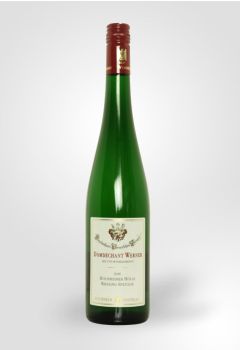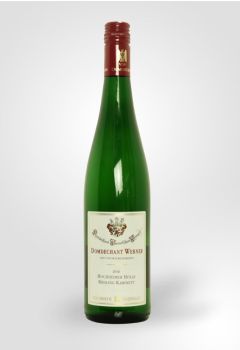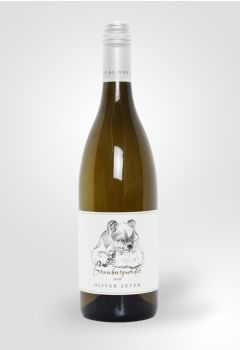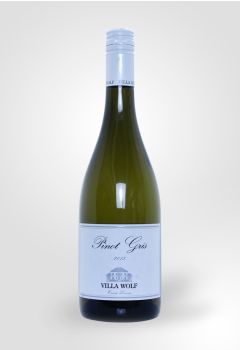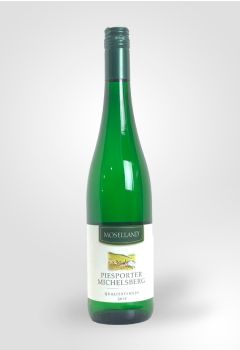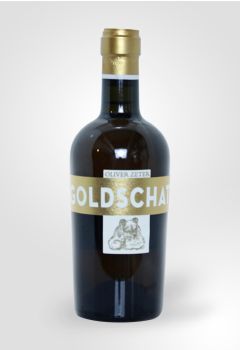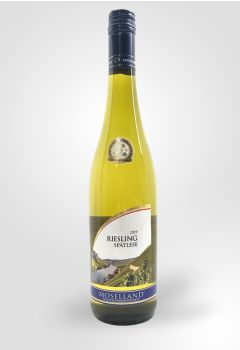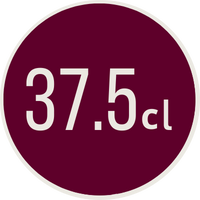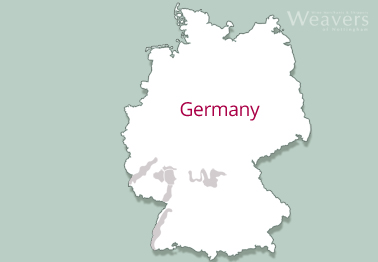
-
- Origin
- Germany
- Rheingau
The nose is rich with the natural fruit aromas of peach and apricot. Made in the Spatlese style, the sweetness is balanced in harmony against the stim... Read More- Origin
- Germany
- Rheingau
The nose is rich with the natural fruit aromas of peach and apricot. Made in the Spatlese style, the sweetness is balanced in harmony against the stim... Read More -
- Origin
- Pfalz
- Germany
A fruit-driven nose of apple, pear and pineapple tempered with a little vanilla and a hint of florality. The palate is full-bodied with a creamy textu... Read More- Origin
- Pfalz
- Germany
A fruit-driven nose of apple, pear and pineapple tempered with a little vanilla and a hint of florality. The palate is full-bodied with a creamy textu... Read More -
- Origin
- Germany
- Baden
This Rivaner is a pale lemon yellow colour with medium acidity and medium bodied. Aromas of nutmeg, yellow stone fruit, apricots, nectarines and subtl... Read More- Origin
- Germany
- Baden
This Rivaner is a pale lemon yellow colour with medium acidity and medium bodied. Aromas of nutmeg, yellow stone fruit, apricots, nectarines and subtl... Read More -
- Origin
- Germany
- Pfalz
Citrus flavours, predominately lemon, on the nose and plenty of stone fruit on the palate. The two combine wonderfully for a full flavour that has a s... Read More- Origin
- Germany
- Pfalz
Citrus flavours, predominately lemon, on the nose and plenty of stone fruit on the palate. The two combine wonderfully for a full flavour that has a s... Read More -
- Origin
- Germany
From the Mosel valley in Germany, delicate floral aromas and generous fruit give this medium style wine a fresh and harmonious character. Read More- Origin
- Germany
From the Mosel valley in Germany, delicate floral aromas and generous fruit give this medium style wine a fresh and harmonious character. Read More -
- Origin
- Germany
- Pfalz
A flavoursome wine with a refreshing crispness. A relatively low alcohol rose ideal for drinking at lunch time and with your summer barbecues. Read More- Origin
- Germany
- Pfalz
A flavoursome wine with a refreshing crispness. A relatively low alcohol rose ideal for drinking at lunch time and with your summer barbecues. Read More -
- Origin
- Germany
- Pfalz
An opulent golden dessert wine derived predominantly from the Sauvignon Blanc grape variety. Luscious honey and white chocolate on the note leads into... Read More- Origin
- Germany
- Pfalz
An opulent golden dessert wine derived predominantly from the Sauvignon Blanc grape variety. Luscious honey and white chocolate on the note leads into... Read More -
- Origin
- Germany
- Pfalz
An unusual example of an oak aged Sauvignon which has been crowned Germany's best. Full-bodied yet gentle with a thrilling minerality and notes of pin... Read More- Origin
- Germany
- Pfalz
An unusual example of an oak aged Sauvignon which has been crowned Germany's best. Full-bodied yet gentle with a thrilling minerality and notes of pin... Read More -
- Origin
- Germany
- Pfalz
An excellent German Sauvignon which is partially aged in oak barrels. This gives the wine a richness and depth whilst still retaining its vibrancy. Read More- Origin
- Germany
- Pfalz
An excellent German Sauvignon which is partially aged in oak barrels. This gives the wine a richness and depth whilst still retaining its vibrancy. Read More -
- Origin
- Germany
- Mosel
Crisp and fresh with remarkable elegance. Lime and peach on the nose and palate with a crisp Granny Smith apple finish. A delightful match with river ... Read More- Origin
- Germany
- Mosel
Crisp and fresh with remarkable elegance. Lime and peach on the nose and palate with a crisp Granny Smith apple finish. A delightful match with river ... Read More -
- Origin
- Germany
- Mosel
A charmingly floral, medium-style wine from the glorious Mosel valley in the heart of this famous wine-producing country. Read More- Origin
- Germany
- Mosel
A charmingly floral, medium-style wine from the glorious Mosel valley in the heart of this famous wine-producing country. Read More -
- Origin
- Germany
- Mosel
This is a delicious and well balanced Riesling Spätlese from the Mosel. Aromatic peachy aromas with a fresh and zippy finish, this is the perfect mat... Read More- Origin
- Germany
- Mosel
This is a delicious and well balanced Riesling Spätlese from the Mosel. Aromatic peachy aromas with a fresh and zippy finish, this is the perfect mat... Read More
In the '70s and '80s it released into the world a torrent of cheap and not very cheerful wines that continue to colour its reputation and do no justice to the excellence routinely on offer. For Germany can craft wines from the Riesling grape that are inimitable and many less familiar vines, such as Silvaner, Müller-Thurgau and, for red wines, Portugieser and Spätburgunder (Pinot Noir), can achieve exceptional quality and value for money.
History
Neither the Phoenicians nor the Greeks made it to Germany and so the Romans, who never missed such an opportunity, pioneered the cultivation of the vine and the making of wine on its soil. Charlemagne, the Church and a wine-loving aristocracy encouraged viticulture to thrive throughout the Middle Ages, but the Thirty Years War in the early 17th century ripped out its heart. In the aftermath, however, Riesling was planted in abundance to ensure that where there was no longer quantity there was quality instead. This legacy remains to this day.
Climate and Conditions
Both topographically and climatically, Germany produces wine on the edge. Vineyards are traditionally located on land unsuitable for other agriculture, chiefly the steep slopes of river valleys, and are usually south-facing to take maximum advantage of the sun. For the climate is marginal and whether the grapes will ripen is the main concern of the German winemaker. This creates problems, and requires great skill in production, but can result in unique wines of exceptional character.
The Classification System
Unlike other countries, where quality, geography or history tend to dominate, Germany has created its own nationally relevant standards of classification. This is based upon the ripeness of the grapes at the time of the harvest. It makes perfect sense in the light of their climate, and ensures that every vineyard has the chance to achieve the highest classification with every new vintage, yet this common sense and equality has come at a cost. Not only is a German wine label an arduous task to decipher, but an average bottle can achieve the same classification as the finest of wines.
Wines of Today
The German wines of today are amongst the finest in the world, just as they always have been. The essential difference between now and the apparently dark days of the seventies and eighties is the quality of the wines that Germany exports. We are no longer awash with the characterless plonk of mass production cooperatives, though these do still exist to entrap the unwary, and are able to find the finest of Rieslings along with the other great wines that the country produces. Above all, once the pitfalls are sidestepped, Germany produces wines that are incomparable in style to anywhere else in the Old World or the New.

